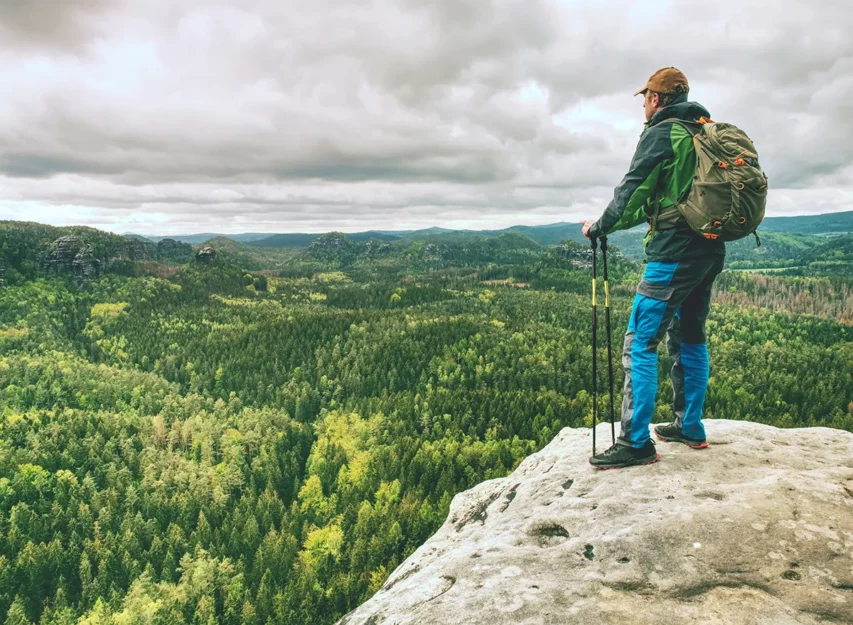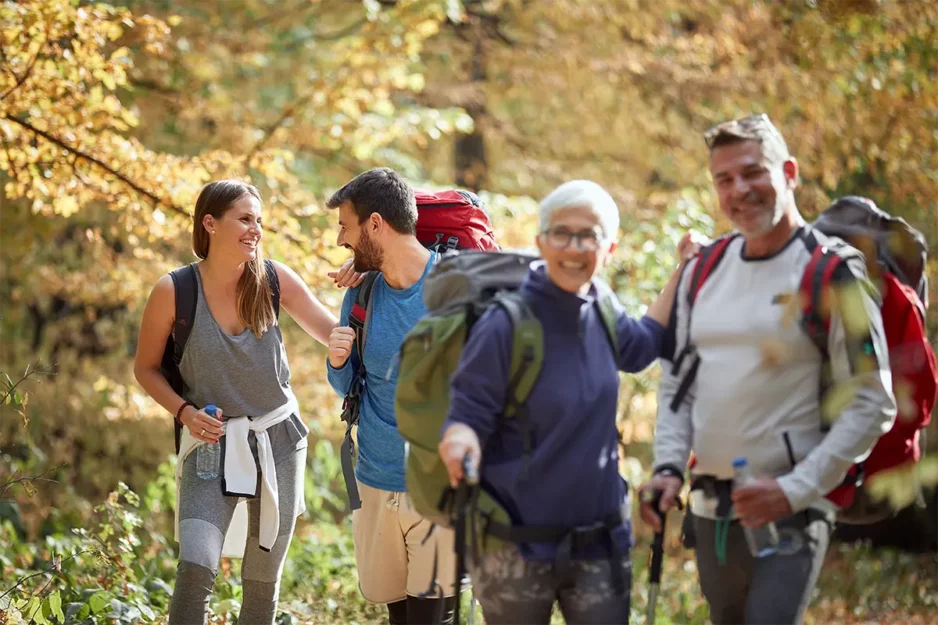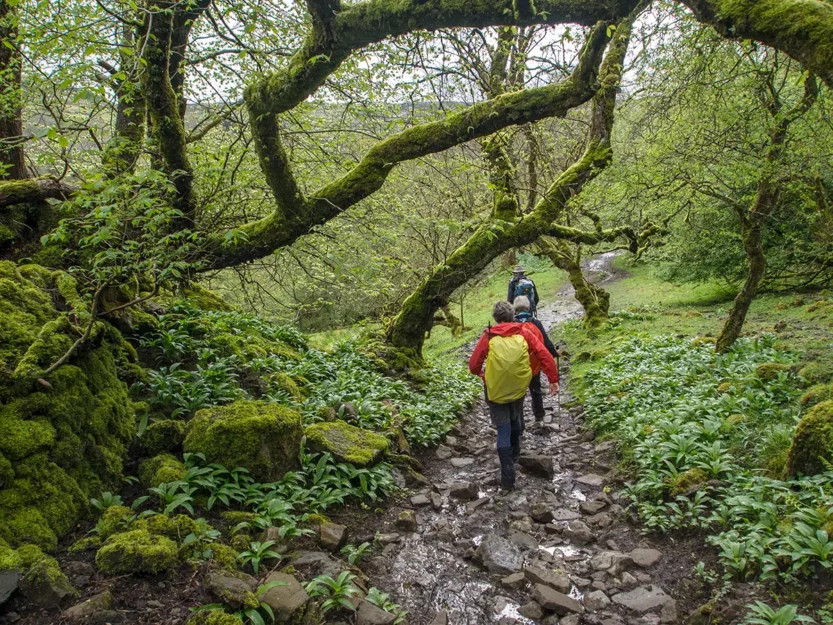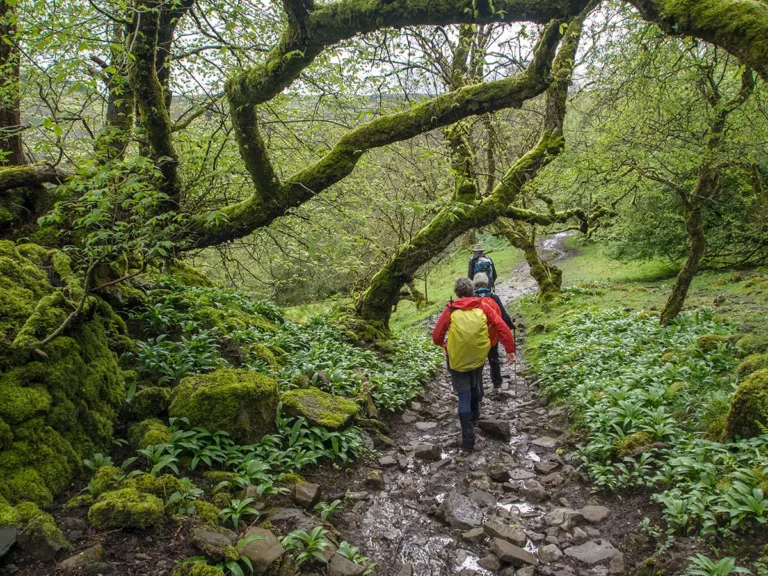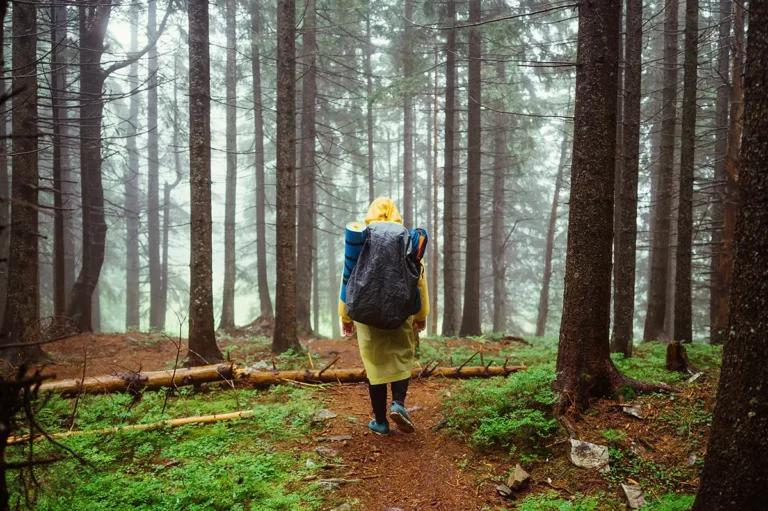You’re ready to start conquering mountains. You have a hiking backpack, boots, and hiking socks. But, did you consider conditioning? If not, here’s a simple breakdown on how to get in shape for hiking.
Hiking is not exactly like walking in the park. Gravel and soft dirt, hills, creeks and other natural features make maintaining a good rhythm over a long distance a real challenge.
Also, for anything longer than a few hour hike, most will want to carry a backpack. That makes hiking distinctly different from just a casual walk in the forest.
Getting prepared for the adventure involves getting fit. Once you’ve built up some leg and back strength, and jogged to get some endurance, you’re ready for the next phases.

How to get in shape for hiking
You worked hard in the gym and are physically fit and ready. But, gyms and traditional training won’t prepare you for steep traverses, switchbacks, and rough terrain.
To gain a footing for the outdoors, and be truly prepared for long hikes, you have to emulate the obstacles.
Often times, that means lacing up your hiking boots, loading up your hiking backpack, and hitting the road. Your body is different from everyone’s, and you can’t know how to get in shape for hiking without a clear understanding of your strengths and weaknesses.
Prepare yourself for long hikes with a backpack
Any hike longer than a few hours should entail some planning and preparation. Part of that effort should be to carry a loaded backpack around for at least several days before the hike.
Experienced hikers don’t need to do this, beginners do.
Every good engineer will carry out tests and build a working prototype before putting their design into full production. Emulate their good example.
By carrying a backpack before the hike you can judge how well it fits, test different loading strategies and watch for points of body irritation, pack wear or imbalance. At the same time, you’re building up those specific muscles and joints that you’ll need for the real event.
Take some long walks with the fully loaded backpack — waters, snacks, first-aid kit — around town whenever possible. Make sure part of that is on uneven ground – curbs, unmowed grass, over small boulders or children’s toys.
Try to find some slanted surfaces to incorporate – city streets, long driveways, hillsides and so forth.
Learn your hiking style and footwork
Experiment with different loading techniques and walking rhythms to find what works best for your body style and fitness level, with the boots and gear you will actually use.
When you start the real hike, preferably with an experienced partner, start slowly. Many beginners, even if they’re fit, try to walk too fast, too soon and take too few rest breaks.
Take your time and enjoy the scenery. You’ll find you’re able to last much longer between rest periods, and you’ll enjoy the experience much more.
Hiking is not a sprint, it’s a marathon
To make your hikes last all day, you need to think more like a marathon runner and less like a sprinter. Develop a steady pace.
An average walking pace is 2.5 to 4 miles per hour. Since hiking has more obstacles than a walk down the street, expect your hiking pace to average 2 miles per hour. But many factors can slow your hike duration.
Beginning marathoners learn quickly that, even when the first mile or two is tough, if you get into a rhythm you can run for many miles without becoming exhausted.
On long hikes, forego the desire to climb every small hill and cross every stream you come across. Walking up (or even down) hills requires much more energy than along a (moderately) level surface.
Emulate their wisdom.
Final thoughts
Now that you know how to get in shape for hiking, it’s essential to begin practice hikes.
From your practice hikes you’ll have ‘taught your body’ what feels comfortable. Try to maintain that, taking 5-10 minute rest breaks every hour or so. You’ll find you can easily do five miles or more even on your first hikes.
As you gain experience and stamina, those hikes can become longer and longer with less risk of fatigue or injuries like muscle cramps.
Load up your backpack and lace up your boots. The longer your hike can last, the more of that beautiful scenery you get to enjoy.


